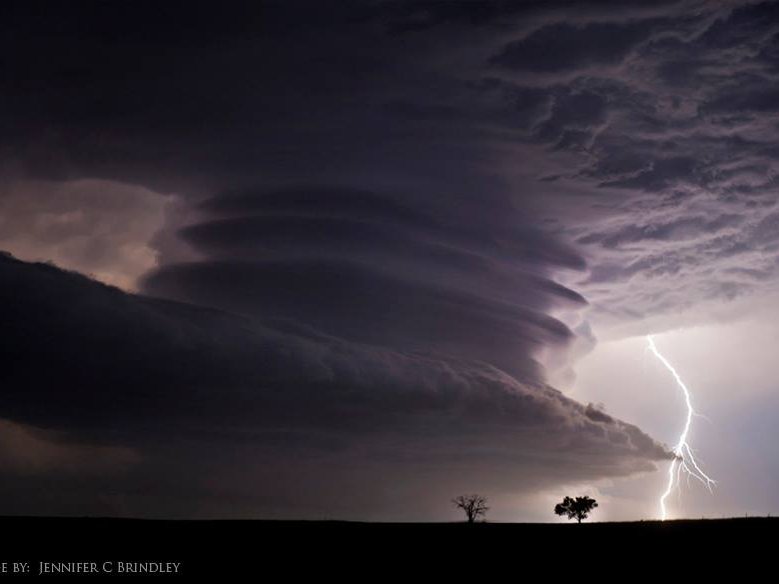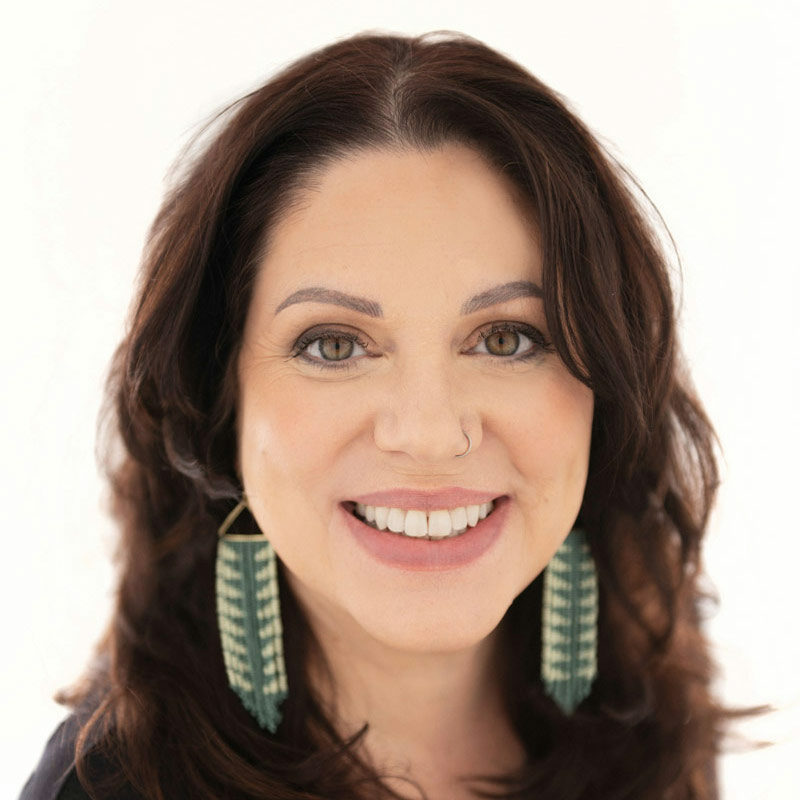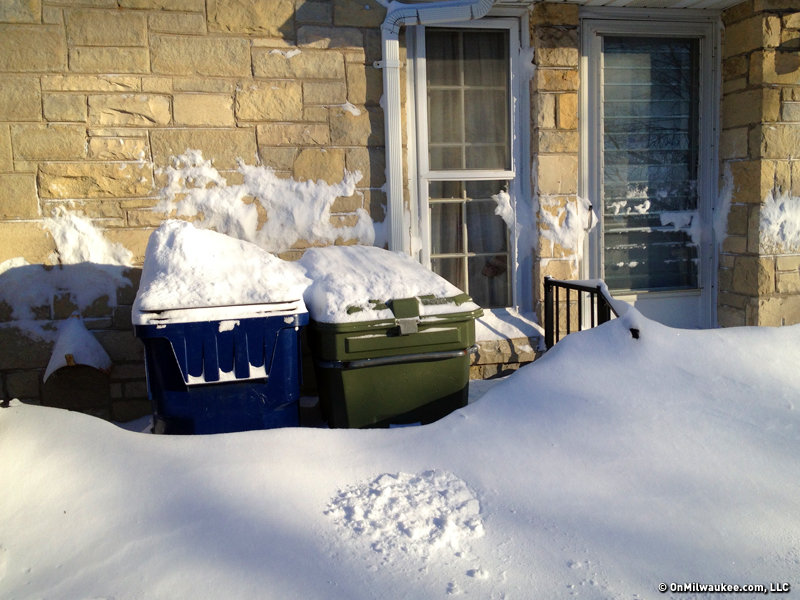"Storm chasers" range from professionally trained photographers and meteorologists to thrill seekers with cell phones. Regardless of the level of one’s expertise, it’s dangerous work, a reminder made clear last week when esteemed storm researchers Carl Young, Tim Samaras and his son, Paul, died while following a massive tornado in Reno, Okla.
For some, the appeal to chasing storms is the rush of adrenaline, the chance to capture a sellable image or video – or at the very least something worth posting on social media. But for others, the reasons for tracking weather go beyond excitement or a quick buck.
Some are fascinated by the patterns – or lack thereof – in nature and their work helps the public understand the destructive power of storms as well as how to stay safe if one occurs.
"I prefer to chase for research as that is purposeful," says Allison Silveira, a Shorewood-based meteorologist.
Silveira has tracked storms on many occasions. Most of it was done for her own interest, but she was also on numerous chases in a scientific capacity for the National Severe Storms Laboratory (NSSL) where she worked as a scout and which required her to find a good location for a mobile radar unit and a mobile mesonet (weather instrument) driver.
She has seen three or four tornadoes and countless severe supercell storms spanning Texas to Kansas.
Her first chase was during the May 3, 1999 storm in Oklahoma and Kansas that included 66 tornadoes.
"It which was a big wake-up call about the humanitarian side of tornadic outbreaks. Those of us in the car, once we saw the tornado and its destruction, could feel the pendulum swing from our initial fascination with the phenomenon to a very visceral natural disaster," she says.
Her second "successful" chase was during another Oklahoma-based storm on May 8, 2003. At that time, very few people had smartphones and the networks were even more unreliable.
To get a position, Silveira says she and her colleagues would call a "nowcaster" – someone at a computer viewing radar and other diagnostics – to determine starting position, and then navigation once the storms developed.
"We had some misinformation about where to position ourselves, and the tornado developed less than a half mile from where we were located. We had no intention of being that close to the storm, and it was very scary," she says.
Silveira says most trained meteorologists are very aware of the tragic nature of tornadoes and tend to resent the glorification of chasing storms.
"Generally speaking, storm chasing is not about tornado interception, it’s about viewing the storm in its entirety, which means being a safe distance from the storm itself," says Silveira."There’s nothing like witnessing nature’s masterpiece with your own eyes, like going to a concert versus listening to an album.
Jesse Anderson, originally from Janesville, was traveling through Europe for the past nine months. Prior, he lived in Milwaukee’s Riverwest neighborhood while attending the University of Wisconsin-Milwaukee.
Anderson is a freelance photographer and prefers the term "severe weather photographer" even though "storm chaser," he says, is accurate.
"When we identify dangerous situations as part of the storms, we report them to help keep people aware, and in turn, safe," he says.
Anderson and his storm-chasing partner took numerous storm spotter training courses. They also independently study meteorology. They have chased a couple dozen storms and tornadoes in Wisconsin, Minnesota, Iowa, Nebraska and Kansas.
"We learn something new every time we chase," says Anderson.
Anderson’s scariest experience was in rural Minnesota while tracking "rain wrapped" tornadoes. Caryn Moczynski lives in West Allis and calls herself a storm chaser as well as a trained weather spotter. She has tracked weather for eight years.
"Weather spotters provide ground truth reporting to the National Weather Service, Emergency Management (911) and to media," says Moczynski.
She has witnessed countless severe storms and 10 tornadoes in Texas, New Mexico, Colorado, Oklahoma, Kansas, Nebraska, South Dakota, Iowa, Illinois and Wisconsin.
"I had a close call in Oklahoma on May 10, 2010. We were watching a tornado when it became a multi-vortex tornado. Several satellite funnels formed, one close to us," she says. "It was very intense."
Moczynski stresses the importance of safety during a storm chase.
"Safety and responsible storm chasing and weather spotting must be the priority. 2013 has been tough on a lot of people," says Moczynski. "Everyone must have a plan. Weather radios are relatively inexpensive and can save lives. Storm shelters save lives, too."
Anderson has similar sentiments regarding safety.
"Storm chasing is dangerous and should not be attempted by anyone that has no training or knowledge of severe weather. As we recently saw, even veteran meteorologists and chasers can get into situations that take their lives," he says.
But for many, including the professionals, the appeal of storm chasing outweighs the risk factor.
"I'm not going to lie, I enjoy the grandeur of Mother Nature and the thrill of the chase – or the hunt," says Anderson. "In my experience, it is a part of human nature to be fascinated with nature. To see a super cell that looks like a space ship hovering over a green field of crops – after our research has led us 12 hours across the plains to meet it there – that's amazing. Mother Nature is something to respect. Both the beauty of it and the power of it can take us away."
Jennifer Brindley Ubl is a professional photographer and a storm chaser. She and her storm-chasing partner Skip Talbot drive thousands of miles each year in pursuit of supercells, tornadoes, lightning and other weather phenomenon. They also volunteer as spotters and report to the National Weather Service.
"I actively pursue severe weather in hopes of documenting and photographing it," says Ubl. "Virtually all types of weather interest us, and we chase to document these weather occurrences."
Ubl is also affiliated with Storm Assist, a 100 percent volunteer organization founded by storm chasers to provide resources for communities devastated by the weather. Recently the group donated a check to Moore, Okla., the town devastated by an EF-5 tornado in May.
Fear is an important and necessary part of her job, says Ubl.
"The fear of a storm and its power is very important, not just for the public but for all storm chasers as well. As soon as you lose the fear you can make bad decisions, some that could even cost you your life," she says.
Ubl says she first became "infatuated" with tornadoes after the 1996 film "Twister" starring Helen Hunt and Bill Paxton as storm chasers. She later was introduced to a real-life storm chaser and mentor.
"After the first storm chase, I was hooked. I didn't know then but the joys of storm chasing are multi-faceted," she says. "It's the passion of capturing something so rare and beautiful."
Molly Snyder started writing and publishing her work at the age 10, when her community newspaper printed her poem, "The Unicorn.” Since then, she's expanded beyond the subject of mythical creatures and written in many different mediums but, nearest and dearest to her heart, thousands of articles for OnMilwaukee.
Molly is a regular contributor to FOX6 News and numerous radio stations as well as the co-host of "Dandelions: A Podcast For Women.” She's received five Milwaukee Press Club Awards, served as the Pfister Narrator and is the Wisconsin State Fair’s Celebrity Cream Puff Eating Champion of 2019.







